How Ruth E. Carter's Costumes In The New 'Black Panther' Honor Chadwick Boseman
- Oops!Something went wrong.Please try again later.
- Oops!Something went wrong.Please try again later.
- Oops!Something went wrong.Please try again later.
- Oops!Something went wrong.Please try again later.
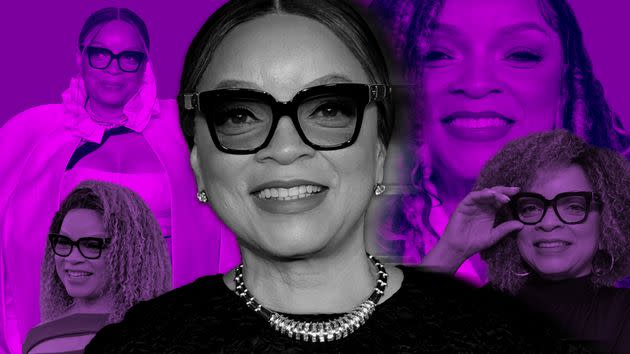
With over 35 years of experience in costume design, Ruth E. Carter's larger-than-life legacy has expanded into the "Black Panther" franchise. (Photo: Illustration: Benjamin Currie/HuffPost; Photo: Getty)
The glitz and glamour of entertainment is nothing without the people who dress today’s biggest stars. For “Who’s Behind the Clothes,” HuffPost spotlights stylists and costume designers who have delivered some of our favorite celebrities’ or characters’ most memorable looks. Read my interview with “Atlanta” costume designer and stylist Tiffany Hasbourne.
“School Daze.” “Do The Right Thing.” “B.A.P.S.” “Black Panther.” Behind these generation-defining films is one Academy Award-winning costume designer: Ruth E. Carter. With over 35 years of experience in the television, stage and film industries, Carter’s resume precedes her.
From “Malcolm X” to “Selma,” “Coming 2 America,” and more, she has over 60 film credits to her name. In February 2019, Carter made history as the first Black American to win the Academy Award for Best Costume Design. Later that year, in September, she appeared in her own episode of the Netflix documentary “Abstract,” a series highlighting artists in the design field.
In 2021, Carter debuted her first fashion line, called “Ruthless,” and was honored with her own museum exhibition, titled “Ruth E. Carter: Afrofuturism in Costume Design,” at the Savannah College of Art & Design’s FASH Museum in Atlanta.
But before Carter was walking down red carpets, she roamed the halls of Hampton University as a special education major.
“I would audition for plays, and one day, I didn’t make the audition for a play,” she recalled. “The director asked me if I wanted to do the costumes; because I had a history of sewing on my own and creating stuff at home, I thought, ‘Maybe that’s something I could do.’ He gave me the key to the costume shop on campus, nobody had been utilizing it, so it became my playground.”
Soon, Carter became known for her wearable art, designing for plays, step shows and dance companies on the yard. Shortly after that, she met filmmaker Spike Lee in Los Angeles, and they launched their careers together. The throughline in her work, she says, is “to tell authentic stories about the Black race,” and, in meeting with “Black Panther” director Ryan Coogler, she found that their missions aligned.
“Much of our story is laced within our past and what we have gone through. I’m not trying to make up the future. I’m using the facts to paint a picture of the future,” Carter said. “If that means I feel that we are destined for greatness, then I can use those stories of greatness today to tell a story about the life of a person in the future or in the present.”
For this edition of “Who’s Behind the Clothes,” Carter talked to HuffPost about the design process for “Black Panther: Wakanda Forever,” discussed the next chapter of her 35-year career, and explained what Afrofuturism in storytelling and costuming means to her.
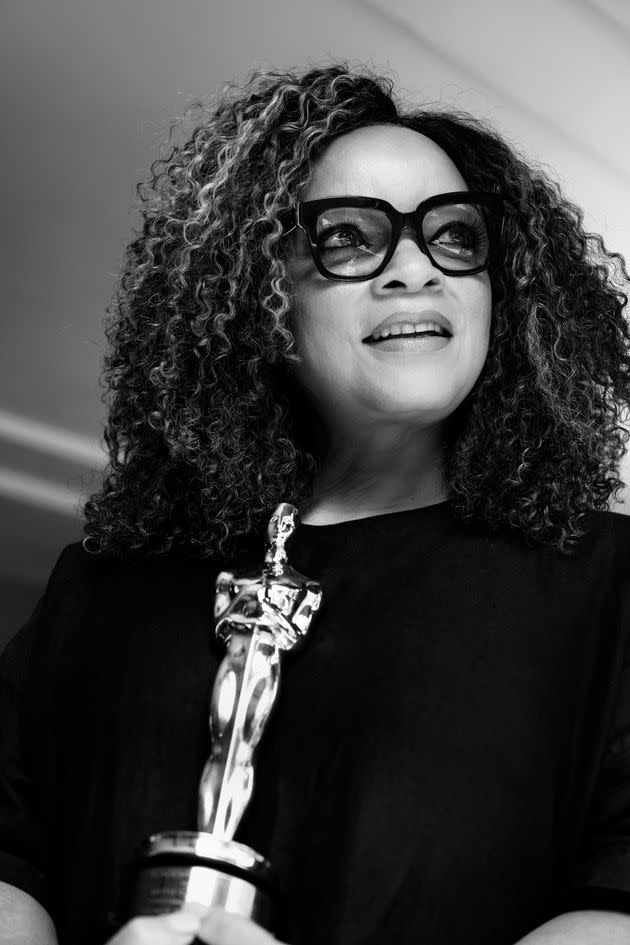
In February 2019, Ruth E. Carter made history as the first Black American to win the Academy Award for Best Costume Design. (Photo: BETINA LA PLANTE)
Do you remember what it was like first learning about “Black Panther” and what intrigued you about it?
I was asked to interview back in 2016 for the first one. When you hear “Black Panther,” you can go in either direction: Black Panther Party or you can think “Black Panther.” I wasn’t sure, but they did send me a couple of comic strips; they’re very closed-grip on story because they don’t want these things to get out. When I was first told about it, I didn’t really know what story we were telling. However, I could look at the comics and tell that we were doing a story about the Black Panther who lived in Wakanda. I started putting images of Afrofuture together to bring to my meeting, so it wasn’t until I got into the meeting that I met Ryan Coogler and [producer] Nate Moore. We found that there was a similar aesthetic that we shared with the images that I brought; he had some of the same images on the wall in his office, which was inspiring to me.
Within the African diaspora, we think of Kwanzaa, we think of Kiswahili, we think of “the revolution will not be televised.” We grew up understanding that, Ryan being from Oakland, California, and me coming through Spike Lee’s vision. His philosophy was similar; we wanted to uplift the race, we wanted to do project images of Afrofuture. For us then, [it] was considered more neo-soul or just having more positive images of people that we knew, as opposed to every time we were seeing someone Black on camera, they were not representing our community and our neighborhood. They were gangbangers or something like that. That was in the forefront of cinema, and we wanted to change that.
When I met Ryan Coogler at Marvel and Nate Moore, they had seen “Malcolm X” and they liked what I had done in those films. “Black Panther” was a similar approach in that we were going to build a world of Afrofuture together; one that was not looking at Africa as one monolithic place, but also all of the beauty of being influenced by tribes as well as moving it into a technological sphere of Marvel. Afrofuture is the combination of that, the culture woven into technology. There was a meeting of the minds in that respect.
What does Afrofuturism mean to you, and what do you think is your responsibility as a costume designer to advance Afrofuturism through storytelling?
My personal desire is to make sure that I tell authentic stories about the Black race, about the African American story. Much of our story is laced within our past and what we have gone through. I’m not trying to make up the future. I’m just trying to paint a picture as a storyteller that’s based on facts. If that makes me kind of a futurist, then the facts of our present will lead us into a future that could be very bright. I’m using the facts to paint a picture of the future. If that means I feel that we are destined for greatness, then I can use those stories of greatness today to tell a story about the life of a person in the future or in the present. We are just now embarking on things, like it being OK to wear braids to work and what understanding diversity really means on both sides of the coin. I take that on as part of my responsibility, not only in storytelling for film, but in my own work in my workplace. I try to walk the walk and talk the talk.
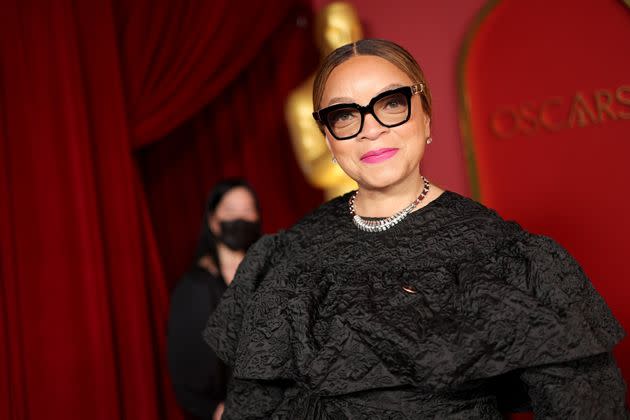
Ruth E. Carter attends the 2022 Governors Awards at The Ray Dolby Ballroom at Hollywood & Highland Center on March 25, 2022, in Hollywood, California. (Photo: Matt Winkelmeyer via Getty Images)
Before you begin a project, what is your preparation process? How much research goes into costume designing for a movie such as “Do The Right Thing” versus “Black Panther”?
A lot. With “Black Panther,” we researched the tribes. “Do The Right Thing” was contemporary at the time; it’s a protest film. We wanted to show that it was the hottest day of the summer. We wanted to saturate the colors and make it very stylized, different than what you might see if you were just to walk down the streets of Bed-Stuy. You might see a little more of a grayer palette, and [with] ours, we didn’t have much money. It was an independent film, so we had to rely on Nike to give us stuff. Nike gave us a lot of compression shorts, tank tops, and shoes — and all of that was very bright. The research that we had to do to balance out the saturated tones from the sportswear was to put African prints together with it. We made a lot of summer tops and shorts out of African prints, then we put compression shorts from Nike underneath it, or bright tank tops with African shorts to stylize our film.
“Black Panther” is more futuristic. It’s contemporary and futuristic, based on the inspiration of the different regions and tribes of Africa. You have the Himba tribe, which uses this red clay on their skin and in their hair, so we use that color when we are creating the Dora Milaje.
There are illustration teams. There are development teams at Marvel. There’s a process not only with Marvel but with “Malcolm X.” There is a process of research and development and being inspired by something that you see and implementing that into a costume. There are prototypes that are done, that are examined by teams, but ultimately the final decision on texture, color, shape, approach, and teams falls on me. That means that the hundreds of costumes that are designed on any project, even if it does come from an inspiration from a magazine or an original drawing, I have to work with the director and capture the storytelling with the design. It’s not like we can just take anything; we have to make sure that everything immerses into the story that the director is leading us through. You can’t have too many people asking too many questions of the director. It’s filtered through one person — the filmmakers, DP, the production designer, and myself — then we all have our teams that we work together with, with keys that lead those teams. There definitely is a family tree, if you would, that develops ideas, presents them, has them manufactured and fit onto actors.
What can you tell us about how the styling, designing and aesthetic of the costumes in “Black Panther: Wakanda Forever” differs from the first film? With the passing of Chadwick [Boseman], what role does the costume design play in depicting a community navigating loss?
I can’t really tell you much about how they differ, but I do know that we have done a lot of things that are new — and we’ve gotten a lot of things in there that are the same. Just like you would see a Batman suit in a new “Batman” movie, it’s not the same suit from the last movie. It’s a new suit. We approached “Wakanda Forever” with that in mind. We were going to keep a lot of the aesthetic of Wakanda; we’re not trying to reinvent something that already worked. But regarding our super suits, the Dora, and all those uniforms that we had in the first one, we wanted to do an upgraded look. You see Lord M’Baku’s wooden armor is a lot different, and there’s a story behind it. The Dora Milaje have different aspects of their armor that’s very different, and there’s a story behind that. You see Queen Ramonda in more beautiful, sculpted pieces, and there’s a story behind that. The upgrade is what we hoped to stun our audience with.
Losing Chad was a shock, and we proceeded with building a world that we felt honored his presence if he were there. We were doing that already, so honestly, nothing was changing with the costumes. We just had to craft another storyline, which is what Ryan Coogler and [co-writer] Joe Robert Cole did, but it was very difficult. As far as the aesthetics and costumes go, we were always trying to make it a very beautiful and interesting and layered Wakanda. The costumes honor him as if the Black Panther lives.
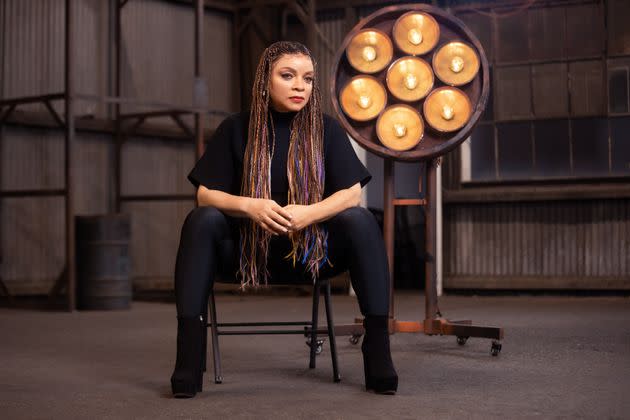
"My personal desire is to make sure that I tell authentic stories about the Black race, about the African American story," Carter said. (Photo: Antwon Maxwell Photography)
You’ve been at the forefront of so many generation-defining movies, creating images and clothes that are imprinted in our minds forever. What does that impact mean to you?
Well, I came into this wanting to be a really good costume designer and I pursued that dream. In my pursuit of becoming a really good costume designer, I grabbed every opportunity to design, because there was growth each time I got a new project. I had 30 years of that with Spike Lee, Robert Townsend, Keenen Ivory Wayans, and the list goes on and on. They also had their desire to be great directors, to tell stories that were unique about the Black community, Black culture. Combined with these stories, these directors, this medium and my desire to also grow as a costume designer, I have amassed a body of work that speaks to young people who are trying to get into this industry, as director, costume designer, or a writer. I mean, they can look at our story and be inspired to follow your dream, because that’s what all of us were doing. Now that I’m here, I have X amount of films behind me and I’m still learning and growing. It means that I have done something that is meaningful, valued and looked up to. It means that I’m not the mentee anymore, I’m the mentor. And it’s a nice place to be.
You have led such an incredible career and continue to build a legacy that spans beyond costume design, from your exhibit at the SCAD Museum last year to your collaboration with H&M in 2020. What are you working on next?
I’m working on “Blade” with Mahershala Ali, which is very exciting. Wesley Snipes did the first three; he actually created the franchise. It’s been 25 years since the last “Blade” was produced, so now we’re remerging with the new “Blade.” I’ve been really focusing on that, and riding high on the upcoming “Wakanda Forever,” anticipating people being excited and wanting to know more about some of the elements that they will experience. So I’m bracing myself.
How do you balance designing for these very different genres, from horror to contemporary to period pieces and Afrofuturistic action films? Does your process waver when you’re navigating different characters from various eras?
I’m not a one-trick pony. I’m an artist, so I want to be multifaceted. I want to be challenged by different genres. I want to take on new aesthetics. That’s like cleansing your palate and sipping a new flavor. That’s part of the storytelling. Thirty-five years behind me, no two are alike. I did “B.A.P.S.” and I did “I’m Gonna Git You Sucka,” but I also did “Malcolm X” and I did Tina Turner’s life story. My process doesn’t change; I have to be inspired by the story, do research behind the story, imagine a color palette or world that these characters live in so that I can dress them properly. It’s a step-by-step process that has similar elements. Before I could even choose an article of clothing, I’ve got to know where you live, where it takes place, what is the mood, how you function, and all of those things before I can put a garment on. That’s where the storytelling and the artistic process comes in. I enjoy the process.
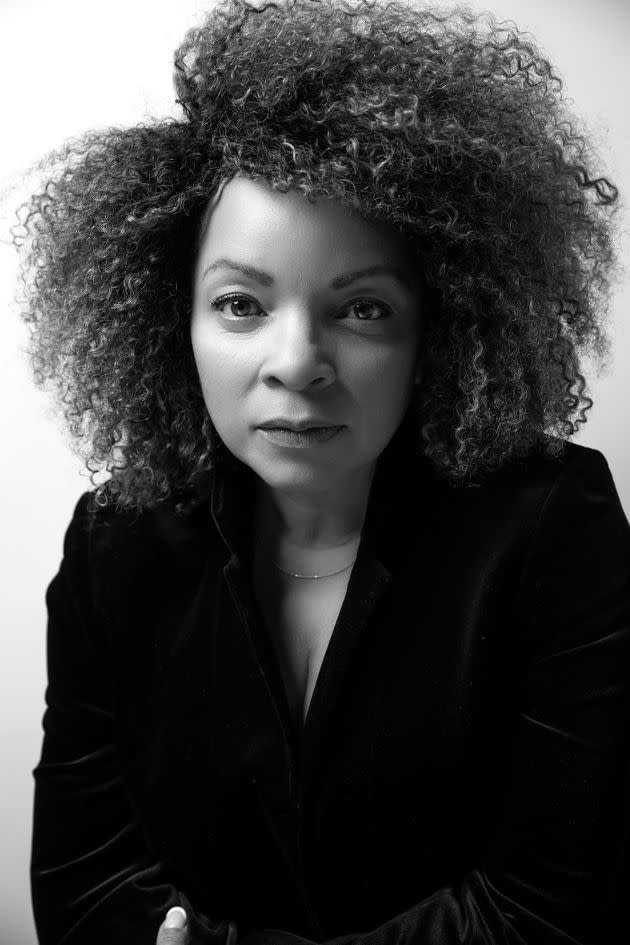
Born and raised in Massachusetts, Ruth E. Carter first made a name for herself as a special education student at Hampton University, dabbling in sewing and costume design. (Photo: Jack Manning III)
What are your top three favorite projects that you’ve done in the past, and why?
I enjoyed working with Denzel Washington on several of his projects: “Mo’ Better Blues” and “Malcolm X.” I enjoyed working with Spike Lee, so “Chi-Raq” and “Da Sweet Blood of Jesus” had a lot of fashion in it and a lot of avant-garde styling in it. It’s easy to say “Black Panther” one and two were favorites, but you learn a lot. None of these are really easy projects, so when you say “favorites” or [ask] if there’s an actor or costume that stands out, it’s hard to actually call anything a favorite. There’s so much to getting it done that each experience is very unique, and you learn from each experience. If I could say I learned a lot from “Shaft” (2000), I learned about the fashion industry. If I could say, “What’d you learn the most from?” Maybe it was “Black Panther” because I was working with superheroes and how they’re made. Also, “Malcolm X” had five decades in one story, so I learned a lot about all of those decades and how to tell that story of one man’s life through childhood to death.
What do you hope people feel seeing the imagery and costumes in “Black Panther: Wakanda Forever?”
I hope that people have an experience that just grabs them and draws them into the screen. If people wear white to see the movie, I hope that the scene that’s portrayed in all white makes them feel like they’re a part of the experience. Because the picture that was made was done by a group of people that cared very deeply about the subject, the setting, the reason, the intention, Chadwick, there was a lot of love put into the creation of “Wakanda Forever.” I just hope that people feel the love in the movie theater.
This article originally appeared on HuffPost and has been updated.
